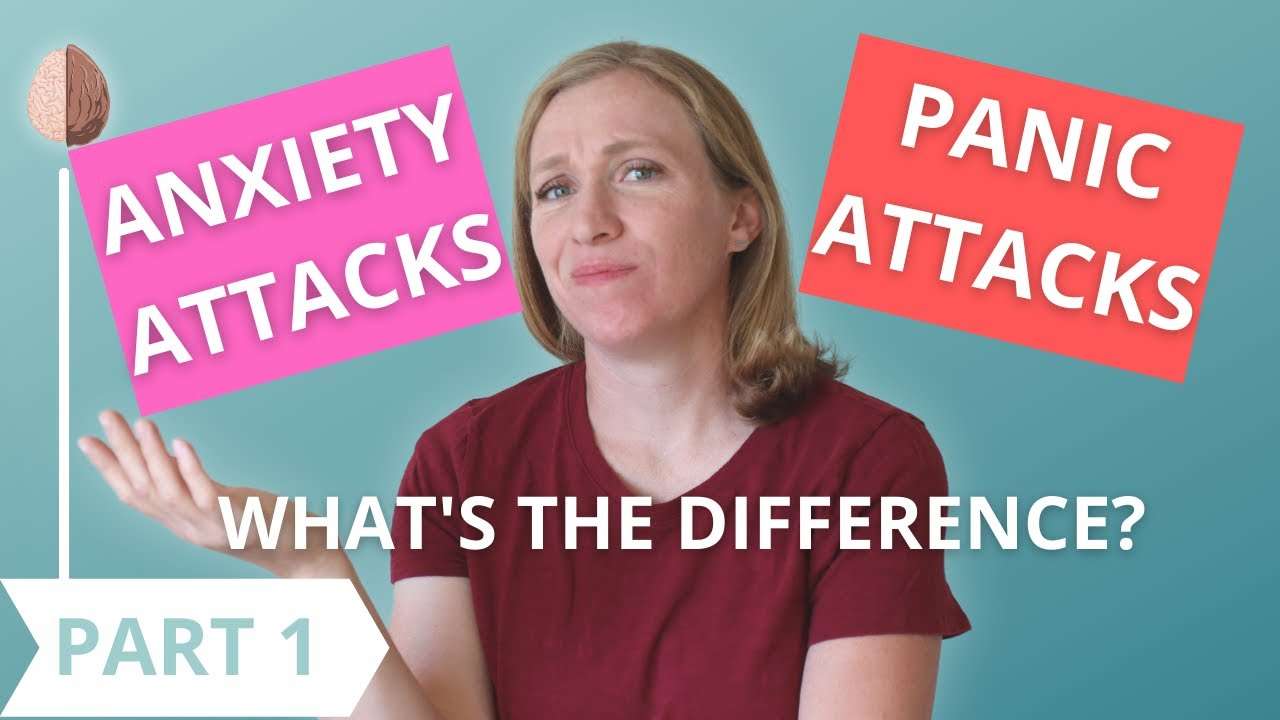By LifeStance Health on February 3, 2022
This content has been updated from previous article
The Pandemic has brought upon an abundance of fear in people’s day to day lives. That fear has created physical effects on many people’s body. This is because when people are faced with scary situations, their body responds with a “fight or flight” reaction. The “Fight or Flight response” is defined as the automatic physical reaction to an event that is perceived as stressful or frightening. You have likely heard of this term before.
To better understand these responses, let’s take a look at an example of how this could come to life. If you happen to find yourself face-to-face with a tiger, would you be more likely to take out a weapon and fight? Or would lace up your best running shoes and run off – taking flight? Both reactions are considered normal for different types of people. However, there’s more to the story. In today’s society, it’s highly unlikely you will have to face a tiger. Scary situations people find themselves are more likely to involve emotional trauma.
Defining The Four F’s of Trauma Response
The Four F’s of trauma response each describe a set of responses that someone may have when faced with threatening or abusive situations.
These various trauma responses may have been learned as a means of survival in childhood, abusive relationships, or severe trauma. The type of response then reoccurs later in life as a default every time the person faces anything they perceive as a threat.
The mental health community broadly recognizes four types of trauma responses:
- Fight
- Flight
- Freeze
- Fawn
These four types of trauma responses can manifest in different ways for different people. For example, a healthy fight response may look like having firm boundaries, while an unhealthy fight response may be explosive anger. In an ideal situation, an individual should be able to access healthy parts of all four types of trauma responses.
Having an understanding of each of these types of trauma responses can help you understand your own behaviors. It’s necessary to have this understanding in order to take the first step toward changing your behavioral patterns and begin the healing process. By taking this step you will be able to face a difficult situation and choose what kind of response works best at that moment, rather than defaulting to learned behaviors that may have been more negative in the past.
Understanding The Fight Trauma Response
The fight response is self-preservation and for people using it, it doesn’t matter who they hurt in the process. In some cases the fight response is helpful and healthy. For example, if a wild animal threatens you and you shoot or trap it, you have responded to a threat in an appropriate way. Similarly, if someone speaks to you in a condescending or abusive way, you might say, “I won’t let you speak to me that way,” which is a healthy fight response.
When used in a positive way, the fight trauma response can help you:
- Create boundaries
- Be assertive
- Find courage
- Become a strong leader
- Protect yourself (and loved ones) when necessary
However, when someone has been exposed to intense trauma over time, the fight response can become unhealthy. For some people, it may feel as though the threat of the tiger never went away. As a result, they find themselves always feeling as though they are on high alert, ready to fight.
An unhealthy fight trauma response can result in:
- Controlling behaviors
- Narcissistic tendencies
- Bullying
- Conduct disorder
- Demanding perfection from others
- Feelings of entitlement
Sometimes unhealthy fight responses turn inward. People can feel incredibly angry with themselves for seemingly no reason.
If you have had unhealthy fight responses in the past, take a moment to be compassionate with yourself. You may have learned these behaviors in order to survive and be safe. That’s okay. But it’s important to recognize that you don’t need to respond this way forever. Therapy is an excellent tool for changing our behavioral patterns, even the ones that are deeply ingrained.
Understanding The Flight Trauma Response
When the threat seems impossible to defeat in a fight, a person may default to leaving the situation entirely. That is the flight trauma response. Similarly to the fight response, flight can be either healthy or unhealthy.
In healthy situations, a flight response to stress can help you:
- Disengage from harmful conversations
- Leave unhealthy relationships
- Remove yourself from physically dangerous situations
- Properly assess danger
The flight response is an important one to be able to access in a healthy way. This is so that you will be able to sense real danger and leave it when possible. However, people with unresolved trauma may perceive everything as a danger, leading to unhealthy flight responses.
When trauma is involved, an unhealthy flight response may lead to:
- Obsessive or compulsive tendencies
- Needing to stay busy at all times
- Panic and constant fear
- Perfectionism
- Workaholic tendencies
- An inability to sit still
The majority of the responses listed above are attempts to outrun or out-work the perceived danger.
Understanding The Freeze Response
Though not as common as fight and flight, the freeze response is one with which many people are familiar. In nature, you might recognize it as “playing possum” – a term that is used to describe an animal playing dead or asleep when threatened. When applied to people, an individual will pause instead of trying to fight the danger or run away.
In a healthy freeze, the response can look like:
- Mindfulness
- Awareness
- Full presence in the moment
As with the other stress responses, the freeze response can become unhealthy when trauma is involved. For example, a child who has an abusive parent may be as still and quiet as possible to avoid the parent’s wrath. Or someone may become so overwhelmed by fear in a threatening situation that they cannot move.
When someone habitually reacts to stress with an unhealthy freeze response, it can cause:
- Dissociation
- Isolation
- Frequent “zoning out”
- Brain fog
- Difficulty making decisions or taking actions
- Perceived laziness
- Fear of achieving or trying new things
Some people get stuck in this pattern of freezing because they fear the danger will still exist when they “thaw.” It’s important to learn healthy ways to deal with a real or perceived danger, rather than completely shutting down. A licensed therapist can help you learn to use the freeze response in a healthy way.
Understanding The Fawn Trauma Response
Fawning is the least known trauma response, and it is primarily related to people pleasing. Individuals who spend a lot of time around toxic people sometimes learn to go above and beyond to make the toxic person happy, thus neutralizing the threat.
In some cases, fawning can be productive. For example, if you throw a piece of meat at a dog that is chasing you, you just might distract them long enough to use your flight response and escape the situation.
A healthy fawning response can facilitate:
- Compassion for others
- Compromise
- Active listening
- Fairness
- Unfortunately, people who have been in toxic relationships often develop unhealthy fawning responses.
- The fawn response to trauma can cause:
- Codependent relationships
- Someone to stay in a violent relationship
- Loss of self
- People-pleasing to the point of destruction
- Little or no boundaries
Do you think you have had experiences using any of the unhealthy trauma responses listed above? Whatever your past may be, therapy is a helpful tool to learn how to react and behave more constructively in different types of scenarios. Many people could benefit from unlearning some of the behaviors they have learned to survive through challenging times. Therapy is a tool that can help you do this. Having the ability to respond to stress in a variety of healthy ways can help in many areas of life, including work, family, and relationships.
Psychological trauma is a response to an event that a person finds highly stressful. Examples include being in a war zone, a natural disaster, or an accident. Trauma can cause a wide range of physical and emotional symptoms.
Not everyone who experiences a stressful event will develop trauma. There are also various types of trauma. Some people will develop symptoms that resolve after a few weeks, while others will have more long-term effects.
With treatment, people can address the root cause of the trauma and find constructive ways to manage their symptoms.
In this article, we discuss the various types of trauma, trauma symptoms, and the available treatment options.
What is trauma?

Share on Pinterest
Ibai Acevedo/Stocksy
According to the American Psychological Association (APA), trauma is “an emotional response to a terrible event like an accident, rape, or natural disaster.”
However, a person may experience trauma as a response to any event they find physically or emotionally threatening or harmful.
A traumatized person can feel a range of emotions both immediately after the event and in the long term. They may feel overwhelmed, helpless, shocked, or have difficulty processing their experiences. Trauma can also cause physical symptoms.
Trauma can have long-term effects on the person’s well-being. If symptoms persist and do not decrease in severity, it can indicate that the trauma has developed into a mental health disorder called post-traumatic stress disorder (PTSD).
There are several types of trauma, including:
- Acute trauma: This results from a single stressful or dangerous event.
- Chronic trauma: This results from repeated and prolonged exposure to highly stressful events. Examples include cases of child abuse, bullying, or domestic violence.
- Complex trauma: This results from exposure to multiple traumatic events.
Secondary trauma, or vicarious trauma, is another form of trauma. With this form of trauma, a person develops trauma symptoms from close contact with someone who has experienced a traumatic event.
Family members, mental health professionals, and others who care for those who have experienced a traumatic event are at risk of vicarious trauma. The symptoms often mirror those of PTSD.
Symptoms
The symptoms of trauma range from mild to severe. Many factors determine how a traumatic event affects a person, including:
- their characteristics
- the presence of other mental health conditions
- previous exposure to traumatic events
- the type and characteristics of the event or events
- their background and approach to handling emotions
Emotional and psychological responses
A person who has experienced trauma may feel:
- denial
- anger
- fear
- sadness
- shame
- confusion
- anxiety
- depression
- numbness
- guilt
- hopelessness
- irritability
- difficulty concentrating
They may have emotional outbursts, find it difficult to cope with how they feel, or withdraw from others. Flashbacks, where a person relives the traumatic event in their mind, are common, as are nightmares.
Physical responses
Along with an emotional reaction, trauma can cause physical symptoms, such as:
- headaches
- digestive symptoms
- fatigue
- racing heart
- sweating
- feeling jumpy
Sometimes, a person will also experience hyperarousal, or when someone feels as though they are in a constant state of alertness. This may make it difficult to sleep.
Individuals may also go on to develop other mental health issues, such as depression, anxiety, and substance abuse problems.
Traumatic experiences
Some research estimates that 60–75% of people in North America experience a traumatic event at some point. The charity Mind in the United Kingdom lists the following as potential causes of trauma:
- bullying
- harassment
- physical, psychological, or sexual abuse
- sexual assault
- traffic collisions
- childbirth
- life threatening illnesses
- sudden loss of a loved one
- being attacked
- being kidnapped
- acts of terrorism
- natural disasters
- war
Traumatic events can be isolated or repeated, ongoing events. A person can also experience trauma after witnessing something traumatic happening to someone else.
People have different reactions to traumatic events. For example, those who live through the same natural disaster can respond very differently despite experiencing the same event.
PTSD
PTSD develops when the symptoms of trauma persist or get worse in the weeks and months after the stressful event. PTSD is distressing and interferes with a person’s daily life and relationships.
Symptoms include severe anxiety, flashbacks, and persistent memories of the event.
Another symptom of PTSD is avoidance behaviors. If a person tries to avoid thinking about the traumatic event, visiting the place where it occurred, or avoiding its triggers, it can be a sign of PTSD.
PTSD may last for years, although treatment can help people to manage their symptoms and improve their quality of life.
Risk factors for developing PTSD include:
- previous trauma
- physical pain or injury
- having little support after the trauma
- dealing with other stressors at the same time, such as financial difficulty
- previous anxiety or depression
Most people who experience a traumatic event do not develop PTSD. The National Institute of Mental Health estimate that the lifetime prevalence of PTSD in the United States is 6.8%.
Childhood trauma
Research indicates that children are especially vulnerable to trauma because their brains are still developing.
Children experience a heightened state of stress during terrible events, and their bodies release hormones related to stress and fear.
This type of developmental trauma can disrupt normal brain development. As a result, trauma, especially ongoing trauma, can significantly affect a child’s long-term emotional development, mental health, physical health, and behavior.
The sense of fear and helplessness may persist into adulthood. It leaves the person at a significantly higher risk of the effects of future trauma.
Treatment
Several treatments can help people with trauma to cope with their symptoms and improve their quality of life.
Therapy
Therapy is a first-line treatment for trauma. Ideally, an individual will work with a trauma informed or trauma focused therapist.
Types of therapy a person with trauma could benefit from include:
Cognitive behavioral therapy
Cognitive behavioral therapy (CBT) helps people to change their thought patterns in order to influence their behaviors and emotions. Evidence supports CBT as the most effective approach for PTSD.
Learn more about CBT here.
Eye movement desensitization and reprocessing
Eye movement desensitization and reprocessing, or EMDR, is another common trauma therapy.
During EMDR, individuals briefly relive specific traumatic experiences while the therapist directs their eye movements. EMDR aims to help people process and integrate traumatic memories.
Several randomized controlled trials have demonstrated that EMDR is an effective treatment for PTSD.
Learn more about EDMR here.
Somatic therapies
Some therapists use somatic or body-based techniques to help the mind and the body process trauma.
A review of the literature in the Psychotherapy and Counselling Journal of Australia found that body-based therapies could help a range of people. These therapies include:
- Somatic experiencing: This approach involves a therapist helping a person to relive traumatic memories in a safe space.
- Sensorimotor psychotherapy: This type of therapy combines psychotherapy with body-based techniques to turn traumatic memories into sources of strength.
- Acupoint stimulation: This involves a practitioner applying pressure to specific points on the body, which induces a state of relaxation.
- Touch therapies: Other touch therapies include Reiki, healing touch, and therapeutic touch therapy.
At present, there is not as much evidence to prove the effectiveness of somatic therapies as there is for CBT and EDMR. Researchers note that more data on these methods will help to determine how they work.
Medications
Medication alone cannot cure trauma or PTSD, but it can help a person manage symptoms such as anxiety, depression, and sleep disturbances. A person should talk to their doctor about their options.
Self-care
Practicing self-care can help individuals to cope with the emotional, psychological, and physical symptoms of trauma. Examples of self-care for trauma include:
Exercise
Trauma can activate the body’s fight-or-flight response. Exercise may help mitigate some of these effects.
Research suggests that aerobic exercise may be an effective therapy for people with PTSD.
Individuals can aim to exercise for at least 30 minutes a day on most days of the week.
Mindfulness
Mindful breathing and other mindfulness-based exercises can ground people in the present, which can stop them from reliving the traumatic event.
Studies suggest that mindfulness-based treatments are a promising intervention for PTSD, whether alone or in conjunction with other treatments.
Connection with others
Withdrawal from others is a common symptom of trauma. However, connecting with friends and family is important.
According to the Anxiety and Depression Association of America, staying in contact with people can help to prevent trauma from becoming PTSD.
It is not necessary to talk about the trauma with other people if it is too difficult. Simply engaging with others can improve mood and well-being. Some people feel a benefit from disclosing the trauma with people they trust.
A balanced lifestyle
A person with trauma may find it difficult to relax or to sleep well. However, sleep, relaxation, and diet all play a role in mental health. If possible, a person should try to:
- sleep for 7–9 hours a night
- eat a balanced diet
- avoid alcohol and drugs
- relieve stress with mindful or enjoyable activities
Support
If necessary, people can ask for support from others. This includes talking to trusted loved ones or joining a support group for trauma survivors.
When to seek help
People who experience persistent or severe symptoms of trauma should seek help from a mental health professional. It is especially important to seek help if the trauma symptoms interfere with daily functioning or relationships with others.
Even those with mild symptoms can feel better once they talk to someone.
Suicide prevention
If you know someone at immediate risk of self-harm, suicide, or hurting another person:
- Ask the tough question: “Are you considering suicide?”
- Listen to the person without judgment.
- Call 911 or the local emergency number, or text TALK to 741741 to communicate with a trained crisis counselor.
- Stay with the person until professional help arrives.
- Try to remove any weapons, medications, or other potentially harmful objects.
If you or someone you know is having thoughts of suicide, a prevention hotline can help. The 988 Suicide and Crisis Lifeline is available 24 hours a day at 988. During a crisis, people who are hard of hearing can use their preferred relay service or dial 711 then 988.
Click here for more links and local resources.
Summary
Most people will experience a traumatic event at some point in their lives. Some may experience symptoms of shock and distress, and most will recover within a short period.
A minority will experience more long-term traumatic effects, such as the development of PTSD. Therapy and self-care can help those with persistent trauma symptoms to manage these symptoms and improve their quality of life.
Read this article in Spanish.



